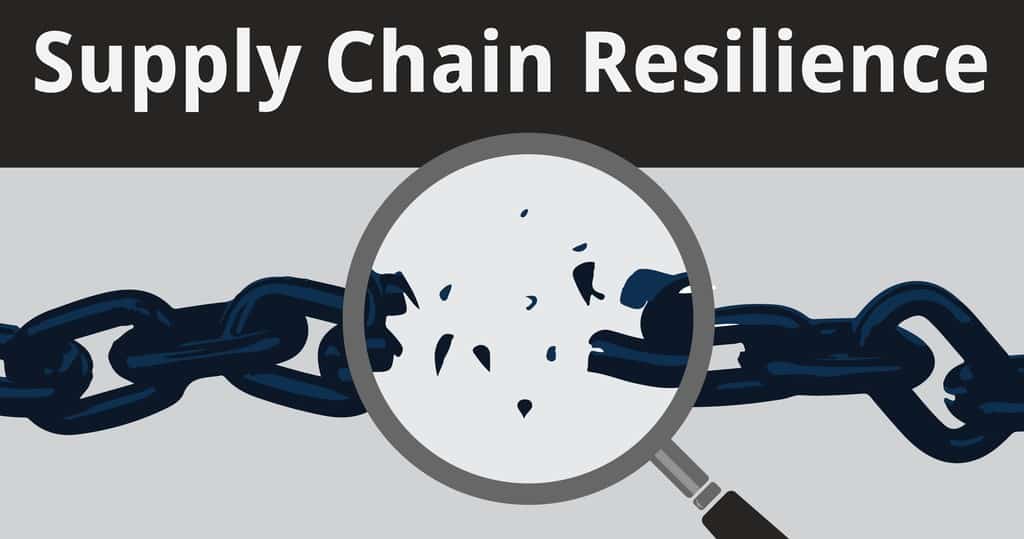If there’s one topic just about everyone has heard about regularly over the past few years, it’s the supply chain. 2021 was a crazy year for the supply chain in general. To begin with, there were supply chain bottlenecks and raw materials shortages happening across the globe. Worse, cargo thefts abounded between 2020 and 2021 (with the occasional vehicle being stolen throughout the year to boot!). When cargo gets stolen, it costs money, which creates a domino effect for businesses and consumers alike. But theft and delays weren’t the only resiliency problems businesses had to contend with. From ships getting caught in canals to damaged cargo and myriad other problems, the need to adapt is bigger than ever. The supply chain needs to be resilient and be able to adapt or adjust to any unexpected changes. As a company, it’s vital to have a resiliency plan in place. Here are a few ideas and tips for committing your organization to better resiliency in your supply chain.

Planning
The best way to outsmart supply chain disruptions is with robust and strong planning. A well executed plan is the backbone of any organization. Without a reliable and resilient supply chain, organizations just can’t maintain profitability or meet customer demands. A good demand plan (planning, forecasting, and predicting customer demand) leads to better efficiency and prevents disruptions in business operations. Planning for resilience ensures you can weather an oncoming storm better than your competition. That’s why digitizing your supply chain and using every resource available to reinforce its resiliency is critical to remaining solvent, especially when times get a bit rough.
Digitalization
In a broad sense, digitalizing some processes is a very good thing. From your procure payment Solutions to invoicing and demand modeling, digitalization is one of the most powerful tools managers have in supply chain management. In this sense, digitalization means creating a digital version of your supply chain. This digital “twin” has tremendous value for managing your supply chain resilience. Businesses need a consistent and constantly updated reference model that visualizes all your current nodes, flows, and policies for your supply chain. Digitalization aids with constant updates and an influx of fresh data you can use to make better decisions. Digital supply chain twins are the ideal reference model for making plans, strategizing, and supply chain optimization. Having this information at your fingertips helps to foster better decisions for your business—and drastically simplify everything from transportation plans and storage to long-term performance.
Creating Demand Models
Demand modeling as it applies to the supply chain works in tandem with demand modeling and your digital supply chain twin. Data modeling and making demand models is helpful for optimizing delivery, solving problems, reducing costs, meeting customer demands, inventory control, and many other integral parts of the operation. There are a few different kinds of models. To be agile and flexible in the face of unpredictable demand or changing market conditions requires some diligence. It also depends on your market. Some industries require a fast model to account for quick product turnaround. Others need to focus more on efficiency to stay ahead of things. In industries with mature and stable markets, a continuous-flow model design is more efficient. Customization is vital here, since a demand model can handle whatever variables the organization plugs into it and help create an efficient digital model to inform business decisions. Demand modeling can also be great for assessing potential problems through an AI-powered impact analysis or similar features.
Continuous Design
A resilient supply chain can adapt to disruptions fast, while also running normally. It starts with ensuring proper supply and finding ways to minimize the impact of any possible disruptions. A resilient organization can operate smoothly no matter what happens. The idea behind the continuous design is to mix automation with data to create a supply chain that can readily adapt to changes and challenges. Instead of following old models of occasionally redesigning your supply chain, switching to a continuous design results in increased value, profitability, service, risk, and sustainability. The key to supply chain resilience is in ditching the old way of doing things and adopting a more dynamic and continuous method of running your supply chain.

Optimization
Optimizing policies is just as important as having life insurance. From identifying the right markets to finding ideal suppliers, optimization is the key to supply chain resilience. Transportation and inventory should also be considered as part of your model, including distribution methods. Optimization means considering all possible outcomes and developing strategies to overcome them. Utilizing a mix of technology, know how, and past experience your organization should be able to optimize your supply chain and ensure maximum resilience as you move into the future.